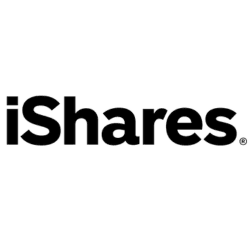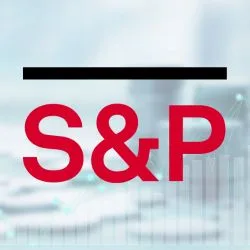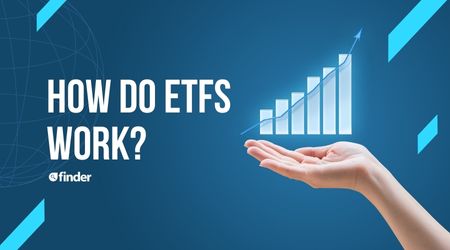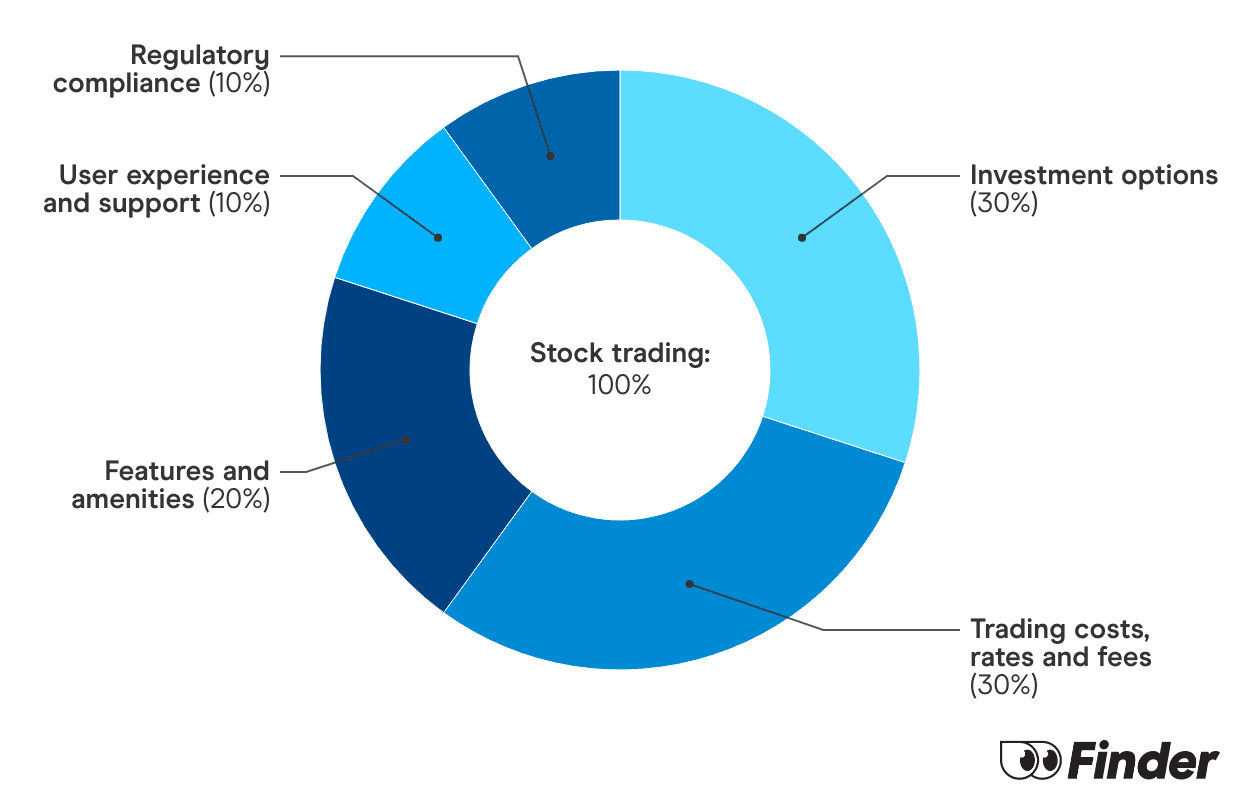Billionaire investor Warren Buffett has said “For most people, the best thing to do is to own the S&P 500 index.” So what is the S&P 500 and how do you invest?
Key takeaways
- The S&P 500 is an index that lists 500 leading US companies on the Nasdaq, NYSE and Cboe.
- S&P 500 stocks have collectively yielded positive long-term returns.
- You can buy stock in S&P 500 companies or invest in funds that track S&P 500 companies.
How to invest in the S&P 500 in Canada
- Choose a trading platform. Compare things like fees and tradable assets of trading platforms that offer access to the S&P 500. For example, if you want to invest in an S&P 500 mutual fund, make sure the broker you choose offers mutual fund investing.
- Open and fund an account. Complete an application with your personal details and link a bank account for funding.
- Research investment options. Find the stock, ETF or mutual fund by name or ticker symbol and research it before deciding if it’s a good investment for you.
- Purchase the security. Buy your desired number of shares with a market order or use a limit order to delay your purchase until the stock reaches a desired price.
- Monitor your investment. Periodically check on your investment to make sure it’s aligned with your objectives.
What is the S&P 500?
The S&P 500 is a market capitalization-weighted stock market index of 500 leading US companies in the most prominent industries of the US economy, traded on either the New York Stock Exchange (NYSE), Nasdaq or Cboe.
The index was first introduced in 1957. Today, the S&P 500 covers approximately 80% of available market cap and is widely regarded as the best single measure of US stock market performance.
What stocks are in the S&P 500?
The S&P 500 includes some of the most recognizable and popular stocks in the world. The top ten constituents make up almost 34% of the entire S&P 500 with Apple alone representing over 7% of the total index. This is why when Apple is down, the entire index feels it. The top 10 constituents of the S&P 500 by index weight as of March 11, 2025 are:
| Company | Ticker | Weighting | Stock price | Market cap | Buy on Interactive Brokers |
|---|---|---|---|---|---|
 | 7.21% | $223.75 |
$3.2 trillion
| ||
 | 5.93% | $395.16 |
$2.9 trillion
| ||
 | 5.50% | $120.69 |
$2.9 trillion
| ||
 | 3.82% | $205.71 |
$2.1 trillion
| ||
 | 2.73% | $626.31 |
$1.5 trillion
| ||
 | 2.03% | $170.56 |
$2 trillion
| ||
 | BRK-B | 1.91% | $528.87 |
$1.1 trillion
| |
 | 1.81% | $188.26 |
$901.2 billion
| ||
 | GOOG-C | 1.67% | $169.93 |
$2 trillion
| |
 | 1.37% | $852.35 |
$756.8 billion
|
How do companies make it into the S&P 500?
The companies in the S&P 500 are hand-picked by the Index Committee. Contrary to popular belief, it’s not just the 500 biggest US stocks. Eligible companies must:
- Be a US-based corporation with common stock
- Have a market capitalization of at least $18 billion
- Satisfy the SEC’s periodic reporting obligations
- Have a primary stock listing on a major US exchange like the NYSE, Nasdaq or Cboe
Ineligible companies and share types include OTC Market (“pink sheets”) stocks, preferred shares, convertible bonds, American Depositary Receipts (ADRs), ETFs, closed-end funds, investment trusts, limited partnerships (LPs), limited liability companies (LLCs) and special purpose acquisition companies (SPACs).
Closing prices are in USDTwo ways to invest in the S&P 500
You can’t invest directly in the S&P 500, as it’s just an index that tracks stock performance. It’s not a fund that holds stocks for investors. But there are a couple of ways you can invest in S&P 500 companies.
1. Buy shares of an S&P 500 ETF or mutual fund
The easiest way to invest in the S&P 500 is to invest in either an exchange-traded fund (ETF) or mutual fund that consists of stocks listed in the S&P 500. Funds that track an index like the S&P 500 are known as index funds.
S&P 500 index funds offer exposure to the index’s top constituents—Apple, Microsoft, Amazon etc.—and provide a great, low-cost way to diversify your portfolio. Since most funds should (in theory) achieve similar returns, performance may not be the most important factor when deciding where to invest. Pay close attention to expenses, which vary between funds.
Examples of low-cost S&P 500 ETFs and mutual funds
| Fund | Ticker | Type | Expense ratio | |
|---|---|---|---|---|
 | Fidelity 500 Index Fund | FXAIX | Mutual fund | 0.015% |
 | Schwab S&P 500 Index Fund | SWPPX | Mutual fund | 0.02% |
 | iShares Core S&P 500 ETF | IVV | ETF | 0.03% |
 | SPDR Portfolio S&P 500 ETF | SPLG | ETF | 0.02% |
 | Vanguard S&P 500 ETF | VOO | ETF | 0.03% |
 | Vanguard 500 Index Fund Admiral Shares | VFIAX | Mutual fund | 0.04% |
2. Buy S&P 500 stocks individually
An alternative way of investing in the S&P 500 is to buy individual stocks in companies listed in the index. This would mean buying and owning individual shares of the FAANG companies like Meta (Facebook), Apple, Amazon and so on.
Compare trading platforms to invest in the S&P 500
Finder Score for stock trading platforms
To make comparing even easier we came up with the Finder Score. Trading costs, account fees and features across 10+ stock trading platforms and apps are all weighted and scaled to produce a score out of 10. The higher the score the better the platform - simple.

S&P 500 Market Update
- February 21, 2025: The S&P 500 experienced its steepest one-day decline this year, dropping 1.7% on Friday as investor concerns heightened over the impact of tariffs and spending cuts proposed by the Trump administration, CBC reports.
- February 12, 2025: The S&P 500 ended down on Wednesday after a hotter-than-expected US inflation reading added to worries that the Federal Reserve would not cut interest rates anytime soon, while CVS Health and Gilead Sciences rallied after upbeat quarterly reports, according to Reuters.
- February 3, 2025: The Dow mostly climbed out of a 600-point hole on Monday as Wall Street clamored for updates regarding President Donald Trump’s tariffs, according to Barron’s.
Is now a good time to invest in the S&P 500 in Canada?
Historically, over the past 10 years, the S&P 500 has seen an average annual growth rate of 10.79%. Since 2009, the index has been profitable every year except for 2015, 2018 and 2022.
However, with inflation, interest rates and economic instability concerning investors, the S&P 500 will mimic what the overall market is doing. Remember that the S&P 500 tracks large cap US companies, so if the overall US (and global) economy is down, indices that track the market will be as well.
Economic dips are temporary, and S&P 500 ETFs are focused on the long game. While no investments are immune to market downturns, S&P 500 ETFs are more likely to bounce back from these temporary downturns. The index has bounced back from every crash, bear market and recession in history. So, you can feel confident that investments tracking the index will eventually recover.
Why should I invest in the S&P 500 index from Canada?
- Access. The S&P 500 features some of the largest and most successful companies in the world and has historically given investors a decent return on their investment. For a stock to be considered for the S&P 500 it must have a market cap of at least $18 billion USD.
- Diversification. Investing in the S&P 500 allows you to gain exposure to 500 different companies at once, which diversifies your portfolio. Diversification is important because if one stock in the index drops, your entire portfolio doesn’t necessarily drop too.
- Convenience. The index itself aims to track the market, which makes it a convenient way to diversify your portfolio without having to buy and sell a number of individual stocks.
Keep in mind that the stocks in the index are all large, household name companies, which opens you up to the potential gains offered by large U.S. stocks. However, since the index is comprised of entirely U.S. companies, your portfolio will take a hit if the U.S. economy (and likely the global economy) suffers.
Pros and cons of investing in the S&P 500
Pros
- Exposure to America’s leading companies. Gain exposure to America’s most influential companies, including Apple, Microsoft, Amazon and Google (Alphabet) with a single purchase.
- Instant diversification. Buying a single share of an S&P 500 index fund will give you exposure to 500 companies, immediately diversifying your portfolio.
- Competitive long-term performance. The S&P 500’s net total annualized return over the past decade is 10.79% (as of Mar 7, 2025).
- Ease of investing. Unless you’re buying up individual stocks, buying shares of an S&P 500 index fund limits the amount of time you need to spend researching and gets you in the market quicker.
Cons
- Only includes US companies. The S&P 500 includes only stocks of US companies and excludes companies in other parts of the world.
- Only includes large-cap companies. The S&P 500 includes only large-cap stocks, so you won’t gain any exposure to small-cap or mid-cap stocks, which tend to grow at faster rates than their large-cap counterparts.
- FX fees. Foreign exchange fees might apply when you buy and sell S&P 500 stocks.
- No control over S&P 500 funds. You can’t tailor S&P 500 ETF or mutual fund investments to match your individual goals, as these funds are typically managed by professionals.
Finder survey: Are men or women more likely to have invested in the US stock market?
Response | Male | Female |
|---|---|---|
| US | 53.04% | 45.36% |
Bottom line
- Investing in the S&P 500, specifically an S&P 500 index fund, is a great way to diversify your portfolio and grow steady wealth over time.
- Investing in the S&P 500 is a great option for individual investors of any experience level.
- Make sure you compare the best investment platforms to figure out which one is best for you.
FAQs about investing in the S&P 500
More on investing

What are the best stocks for beginners with little money to invest?
Want to dive into investing but don’t have much to spend? Take a look at these types of stocks.
Read more…
Meme stocks: What they are and examples of popular stocks
Meme stocks can produce large gains in short periods, but the stocks are volatile.
Read more…
How do ETFs work?
Your guide to how ETFs work and whether this type of investment is right for you.
Read more…More guides on Finder
-
What is direct indexing and how does it work?
Direct investing is an alternative to index fund investing, and it lets you take advantage of tax-loss harvesting. But it’s still new in Canada.
-
How to invest in “Magnificent 7” stocks
How the Magnificent 7 stocks are tracking and how to get your own stake in these top performing companies.
-
How to buy Coinbase stock in Canada
Steps to buying Coinbase stock in Canada with 24-hour and historical pricing before you buy.
-
Trading promos & investment account bonuses for 2025
Enjoy perks like free trades and cash back when you open a stock trading account with these online broker promotions.
-
Methodology for stock trading platforms and apps
Here’s our methodology for scoring the features that matter, and picking the top stock trading platforms in Canada.
-
Best renewable energy stocks
These are the best renewable energy stocks to buy now in Canada.
-
Best stocks to buy right now in Canada
Finder’s unique algorithm found the 20 best TSX stocks to buy right now.
-
10 best trading platforms and apps in Canada for 2025
Whether you’re a new or experienced investor, these are the best stock trading platforms and apps in Canada.
-
How to buy US stocks in Canada
Buying US stocks in Canada is easier than you think. Find out how to buy US stocks in 4 simple steps.

